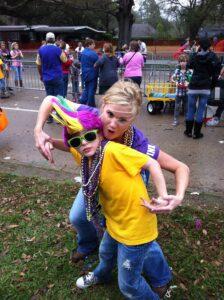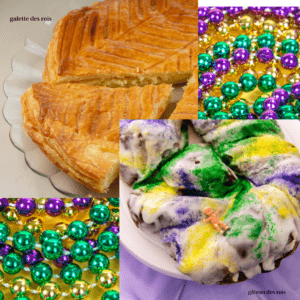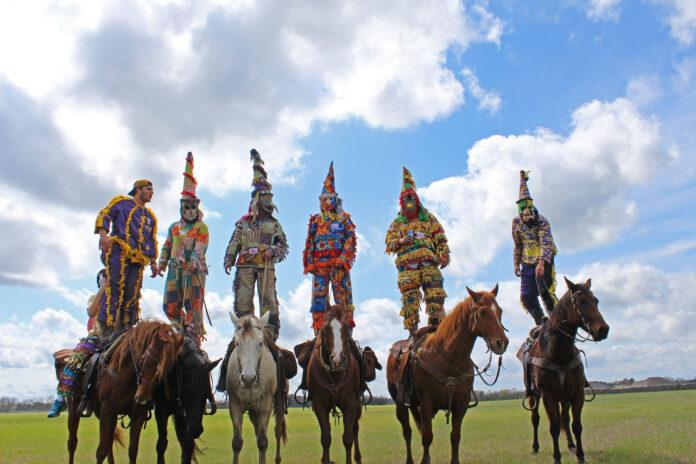“Laissez les bons temps rouler” (let the good times roll) is a phrase most commonly associated with South Louisiana, where it embodies the spirit of one of our biggest celebrations, Mardi Gras. The festivities kick off on Epiphany/Twelfth Night and culminate the day before Lent.

Most Mardi Gras, also called Fat Tuesday, celebrations date back to Europe in the 17th and 18th centuries. It was brought to the colonies by the French to mark the beginning of the Lent season, which comes to an end at the Easter holiday. Areas near New Orleans and Mobile adopted the holiday, evolving over time into the modern-day festivities with revelers on floats, tossing ‘throws’ (colorful beads, coins, candy) and parading through the streets.
The sophisticated balls hosted by New Orleans’ high society became the foundation for the grand Mardi Gras balls we know today. These traditions soon gave way to street processions of masked revelers in carriages, and the inclusion of ‘throws’ began with the Twelfth Night Revelers.
Today, most Mardi Gras “krewes” (a private organization staging festivities during Mardi Gras in New Orleans) have specific membership requirements and policies. These krewes organize whimsical parades that culminate in elaborate balls featuring famous entertainment, such as Steve Riley and the Mamou Playboys (La Danse de Mardi Gras), or Wayne Toups.
Cajuns also indulge in King Cakes to honor the three wise men who visited the baby Jesus on the Feast of Epiphany. Shaped in a circle, the cakes symbolize the kings’ winding route to the Christ Child. In our area, a trinket (tiny plastic baby) is hidden inside representing the infant Jesus, and the person who finds it is responsible for buying the next cake.
There are two main versions of the French King Cake. The “galette des rois” is a flaky pastry filled with frangipane, offering a rich, buttery flavor. The “gâteau des rois,” on the other hand, is made from a brioche dough, decorated with colored sugar and sometimes beads. These cakes are a beloved tradition during Carnival Season, and local bakeries ship them worldwide (my favorite local bakery is Poupart’s Bakery).

Cajuns celebrate Carnival Season in many unique ways, but for me, it’s all about the Courir de Mardi Gras, or the Fat Tuesday Run. Led by the Capitaine, this traditional run begins on Lundi Gras (the Monday before Mardi Gras) and features masked and costumed participants, mostly on horseback and some on foot, visiting house to house to house to gather ingredients for a delicious gumbo. The revelers dance and sing for homeowners in exchange for the essential ingredients to make this mouthwatering dish, including chicken stock, the “holy trinity” (celery, bell peppers, and onions), roux, and a chicken—caught and chased rather than purchased from the store.
Whether you want a grand experience in New Orleans (Endymion) or a smaller version in Lafayette (Krewe des Amis), both are guaranteed to bring smiles and memories home with you. I’ve been asked to share many Cajun recipes which proves impossible. Cajuns do not cook using recipes. We cook using the memories passed down from our families. The best way to enjoy our famous meals like boiled crawfish, gumbo, chicken fricasse (sticky chicken) is to visit!
Visit us in South Louisiana where we know how to laissez les bons temps rouler!












